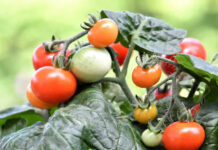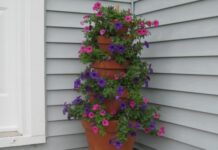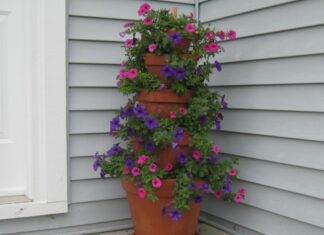Pruning your tomato plants helps to increase airflow, reduce disease, and optimize fruit production. In this article, we will discuss how pruning improves tomato harvest and provide 6 simple pruning tips to help you get started.
Tomato Harvest and Tomato Pruning
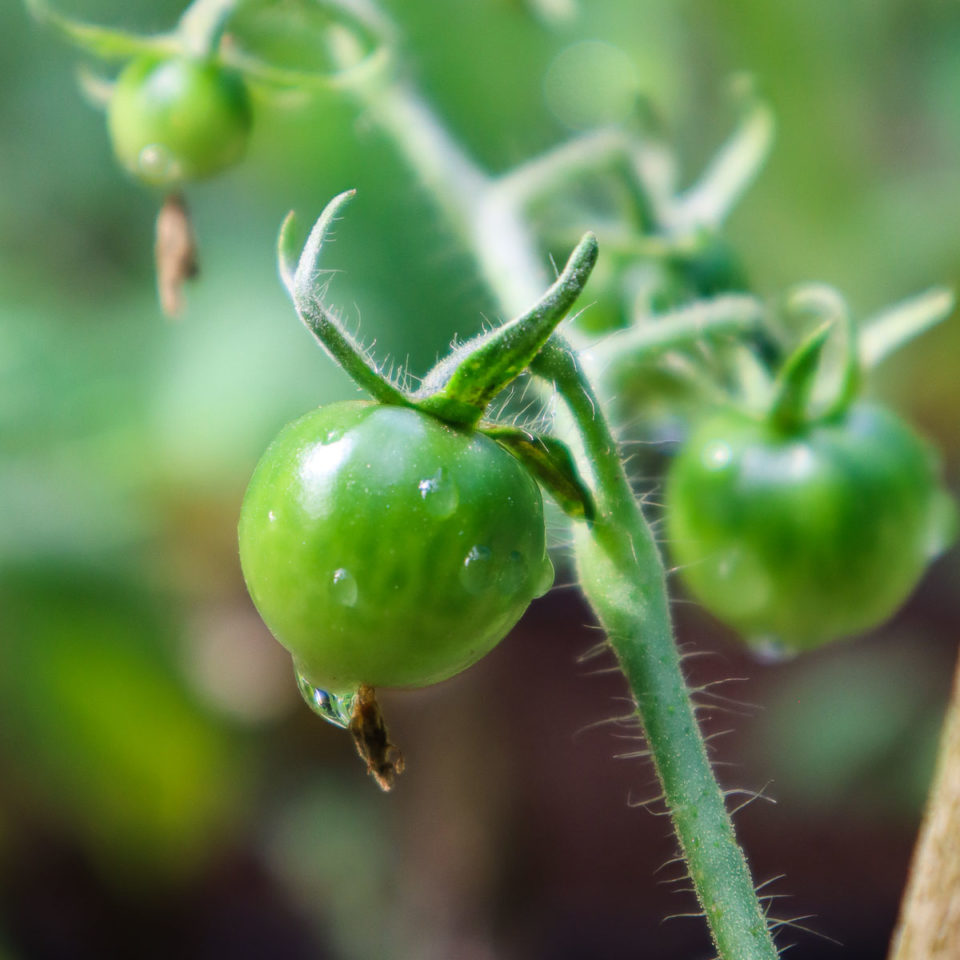
What kinds of tomatoes should I prune?
Tomatoes can be divided into two main categories: determinate and indeterminate. Tomatoes are made to grow till a certain size and then quit. Tomatoes that are indeterminate keep growing all through the growing season.
You may identify the type of tomato you have using seed catalogs, seed packages, or plant identification stakes. Only prune tomatoes that are indeterminate.
Why do I need to trim my tomatoes?
Indeterminate tomatoes produce more fruit when pruned because the additional growth that is removed frees up energy for the growing fruit.
Redirecting energy back to the fruits and reducing fruit shadowing are two effects of removing excess growth that will hasten fruit maturation.
Additionally, by increasing airflow within a plant, pruning can lower humidity and hasten the drying of any remaining leaves. The development of bacterial and fungal diseases is less likely in this dryer atmosphere.
Similar results are obtained by removing the tomato plant’s bottommost leaves.
When should I cut back my tomato plants?
When the first tomato blossoms are open and easy to recognize, in late June or early July, begin pruning. After the initial pruning, perform a second and third pruning (as necessary) every 10 to 14 days.
In order to give tomato plants enough time to establish canopies that will shield fruits from sunscald, stop pruning one to two weeks before to your anticipated first harvest (pale, injured areas caused by exposure to direct sun).
How Pruning Improves Tomato Harvest
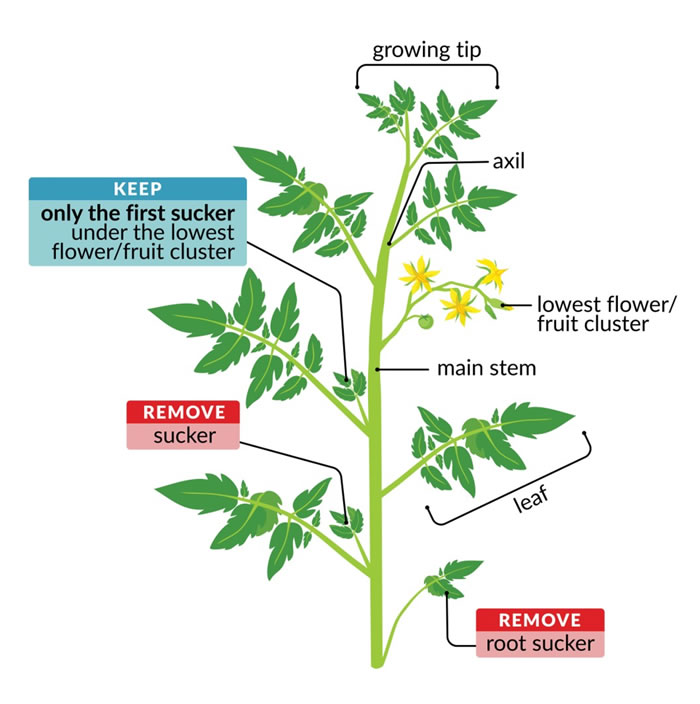
Tomato plants can be made healthier and more prolific by pruning and utilizing plant supports. Pruning has the benefits of keeping plants compact, preventing sprawl, and reducing illness by enhancing circulation.
Suckers, the shoots that develop in the axils where side branches meet the stem, are typically removed during tomato trimming. When suckers are little, pinch them off or use pruners to cut them off.
In the beginning of the season, suckers may be small, but you should still get rid of them as soon as you can. If suckers are allowed to develop, they will take energy away from tomato fruits produced on the primary and secondary stems and instead generate their own leaves, flowers, fruits, and even more suckers.
Additionally, keep an eye out for and get rid of any root suckers that develop at the bases of plants during the growth season.
If the suckers are little, you can remove them by pinching them between your thumb and index finger, or you can use hand pruners or scissors. Regularly washing your hands with soap and water or using an alcohol-based hand sanitizer will help to clean your fingertips.
Use rubbing alcohol on scissors/pruners for at least 30 seconds to disinfect them (both before pruning and between each plant). Decontamination will aid in halting the spread of pathogenic bacteria, viruses, and fungus.
6 Easy Pruning Techniques to Boost your Tomato Harvest
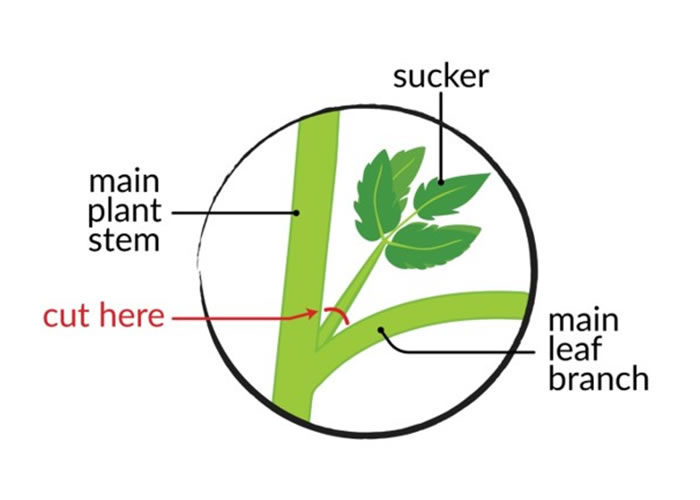
Trimming off extra foliage will increase the number of tomatoes produced per plant as well as improve the size and quality of the fruit. Pruning away unwanted growth from each plant simply requires a short amount of time.
Your tomato plants can concentrate their energies more on producing vibrant, flavorful fruit by removing the excess of leaves. Use these 6 straightforward suggestions as a guide when pruning tomato plants.
1Tomato Harvest- Pruning Tip: Prune all of your tomato plants
A determinate tomato plant’s entire crop ripens in 4 to 6 weeks. On the other hand, indeterminate tomatoes continue to grow after reaching a specific height. For months, they continue to grow fresh foliage, blossoms, and fruit until a frost kills them.
Tomato plants that are indeterminate by nature yield more foliage than those that are determinate. Because of this, trimming to eliminate extra foliage is most beneficial for indeterminate tomatoes, however it also increases the output of determinate tomatoes.
Simply put, determinate tomato types, which generate new leaves and fruit for several months, require less pruning time than indeterminate varieties.
A brief Internet search of the variety name should make it clear whether the tomato types you are planting are determinate or indeterminate. Pruning is especially beneficial for indeterminate types including “Sungold,” “Sweet 100,” “Juliet,” “Big Boy,” “Early Girl,” “Big Beef,” “Jet Star,” “Brandywine,” and “Cherokee Purple.”
2Tomato Harvest- Pruning Tip: Once flowers develop, begin pruning
This typically occurs a few months after young transplants are placed in the garden. Typically, tomato plants start flowering in June or July.
After any dew or nighttime rain has dried off the foliage, prune plants in the morning. Spreading plant diseases will be less likely as a result. Plants should be pruned when the suckers are 2 to 4 inches long.
Tomato plants that reach a height of 4 feet or more and stop growing only require one pruning. As they continue to grow new leaves, indeterminate tomatoes can be clipped every two weeks.
3Tomato Harvest- Pruning Tip: Delete the suckers
With your thumb and forefinger, pinch off suckers or cut them off with a pair of clean, sharp pruners. Take out as many suckers as you can.
Pruning tomato plants is both an art and a science, depending on the type and the growth environment in your garden. When in doubt, pass on a sucker and wait till the season is through to see how things turn out.
The following year, adjust your approach in light of your observations.
4Tomato Harvest- Pruning Tip: Delete the lower leaves
By removing these leaves, you can reduce the likelihood that bacteria and fungi in the soil will splash up onto the plant during rain or irrigation.
5Tomato Harvest- Pruning Tip: Slice tomatoes with thinner fruit
Just cut off any emerging fruit and keep one or two of the largest tomatoes in the cluster. Thinning is the term for this kind of fruit pruning.
Thin the fruit to help your plant focus its energy on the remaining fruit if you want good tomato harvest and bigger tomatoes.
6Tomato Harvest- Pruning Tip: Keep it spotless
When pruning tomatoes, constantly wash your hands with soap and water or sterilize your hands with a hand sanitizer. If you use pruners, keep them clean as well by wiping them down with rubbing alcohol or a weak bleach solution in between each plant.




















